Emergent curriculum is a method of planning for children’s learning that is responsive to children’s interests. It’s both inquiry and play based, and allows educators to respond to observations and interests, build on prior learning and provoke new ideas and opportunities.
While much of the focus of emergent curriculum is based on children’s interests, ideas can come from many sources including:
- Families/home environment
- Community interactions/local area
- Educator interests
- Physical environment
- Weather/time of year/occasions
- Community and cultural values
- Popular culture
The benefits of an emergent curriculum are truly endless
First and foremost, we want children to feel pride and ownership over their experiences, and this most certainly includes their learning. And how incredibly respected and motivated children must feel when their teachers not only validate their interests and questions, but take the time to embrace and expand upon them. This sparks intrinsic motivation within the child, which leads to engagement, which leads to meaningful learning.
The collaborative, child-led classroom hosts a constant exchange of questions and ideas, leads to hands-on research, the inclusion of new vocabulary, higher level thinking, experimentation, prediction making, group think, and so much more.
In my experience, because the class is acting as a team when using an emergent curriculum, educators experience less "challenging behaviors" that may be more commonly seen in a traditional classroom. The traditional classroom again, is very direct and one-sided.
Another beneficial aspect to the emergent curriculum is how it really evolves an educator’s practice. Because the curriculum isn't handed to them at the start of the year, there's no script to follow. There's so much reflection that goes into this practice, and reflection is such a crucial aspect for learning. It can be challenging, of course, but it is by far the most meaningful and rewarding route to take. You wind up respecting the children so much more because you've allowed yourself to see, support, and embrace their competencies.
Coffee and toddlers — a very NYC affair that lasted half a year
One of the investigations that really stands out in my memory was an amazing coffee study in one of my toddler classrooms - obviously I'm from NYC, right? The children never once tasted coffee, yet this investigation went on for half the year.
It all began with a toy Keurig coffee pod machine that was gifted to the classroom. Of course this was something familiar to the children, as many of their parents made coffee at home. It wasn't long before the children were making themselves some coffee too. We then took a stroll to the teacher's lounge to observe the teacher's real Keurig machine. From a safe distance, we popped a k-cup (pod) in to see, smell, and hear the process. We also took a few handful of k-cups back to the classroom to investigate what was inside of them.
From there, we added coffee grinds, cups, funnels, etc. in our sensory table, and also explored other creative avenues such as coffee art. We looked at the work of artists who create with coffee. We painted with room temperature brewed coffee - the more water we added, the lighter/more transparent the shades became. We also made a coffee collage that incorporated brewed coffee, coffee grinds and coffee beans. Some children tried breaking the beans to make their own grinds which was really sweet, and it was lovely to see that they made the connections that grinds come from broken down coffee bean.
Another fun art investigation was adding coffee beans and paint to a box and shaking them up! Our staff also brought in different machines they use to make coffee at home, such as a french press, percolators, etc. Children helped prepare coffee through the different machines. We looked at similarities and differences. We also went around the school inviting fellow educators to our classroom for a cup of coffee.
We took class walks to the supermarket, looking for particular words and numbers to show us which aisle we needed to go down. We prepared, compared, and contrasted other hot beverages, and had a (consumable) hot chocolate party in which the children were able to make their own beverages and drink them. Along with expanding the dramatic play space and seeing more coffee and cafe play emerge, we finally concluded our study at a local cafe in which a barista prepared some drinks in front of us. The staff at the cafe was really behind what we were doing, and treated the children and staff to a dine-in experience with juice, croissants, and fruits. This was several years ago, but it feels like yesterday as the memory is still so present and treasured.
The sensory delight of bubbles, and how to extend ideas using planning tools
Bubbles are one of those wondrous things that always seem to capture the interest of children. There always seems to be a bubble machine at events and celebrations, and as soon as it's flicked on, it's like a joy evoking child-magnet. When you think about it, the interest is so evident, but as adults, we may overlook the wonder and learning that bubbles can actually inspire.
Primarily, they're a sensory delight, and children learn best utilising their senses. Bubbles are soft, wet, round, weightless, transparent yet iridescent, they expand, they shrink, they POP! they float, they stick, and they're in more places than we realize. Whether the bubbles are boiling in the pot, part of bubble wrap found in a delivery box or used to clean our bodies, house, cars, etc. they're literally everywhere!
The subject of bubbles is one I’ve explored several times, with children of various ages. Even though the topic may have been the same, the evolution was always very unique depending on the specific class. I recall one investigation that came about after a schoolwide event. When the bubble machine was utilised, I noticed how all the children instantly ran towards and reached for those captivating bubbles. I immediately began documenting the moment by taking photos. Later that week, I had printed the photos and presented them back to the children, so they could recall and reflect on the experience. After sharing their excitement about bubbles, I then incorporated my next tool to gain more information — the KWL Chart. A KWL chart, also known as “Know, Wonder, Learn,” is a chart to document what the children know about a specific topic, what they wonder about said topic, and eventually, reflect on what they’ve learned.
Below is a chart of different responses and questions from the children. I intentionally leave the “Learned” portion empty, as I think not seeing their final answers keeps our minds more open to where this journey can lead. But I will say, it took some really fun and unpredictable turns!
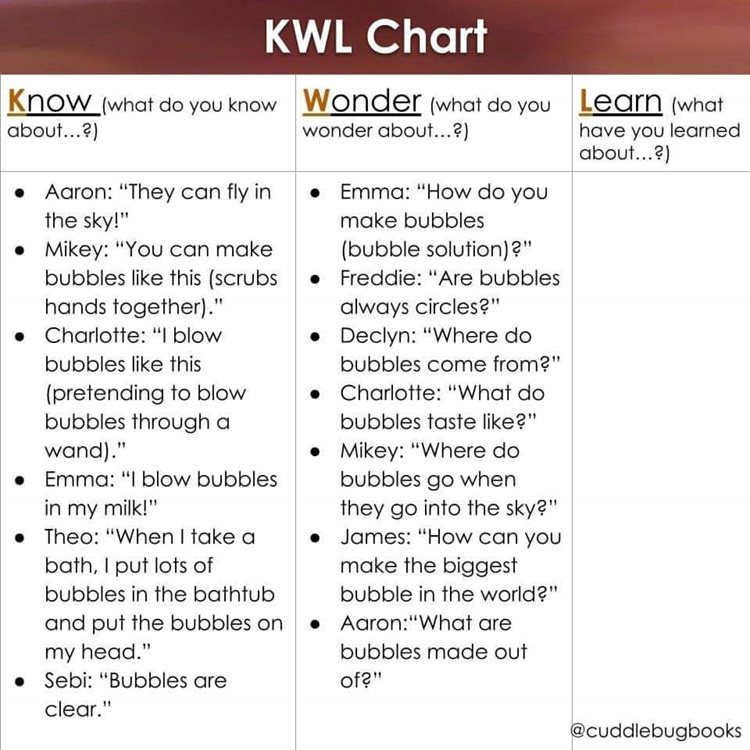
The use of the KWL chart is important because it gives us a sense of where the children are at and where their curiosities are. This information can assist in how we may start, support, and expand upon their inquiries. In order to have them think even more about bubbles, we began to formulate a wordweb. The wordweb is a wonderful tool to prompt connection making, while sorting and organizing ideas. It also demonstrates different routes we can explore and dissect. The great thing about KWL charts and word webs is that you can always add to them, making them flexible - as curriculum should always be!
Initially I open the floor up to the children first to see what connections they make. Most children shared they see bubbles in their soap and baths, while others shared about finding bubbles in drink. Now, because we’re a team of learners, I also put on my thinking cap to consider other areas that we can connect bubbles to. Below was our initial compiled classroom word web for bubbles.
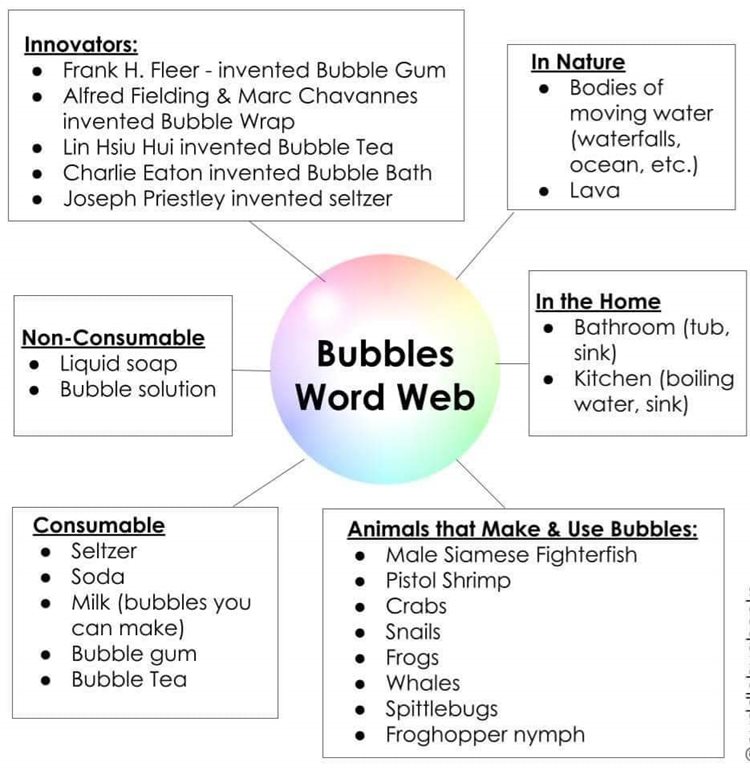
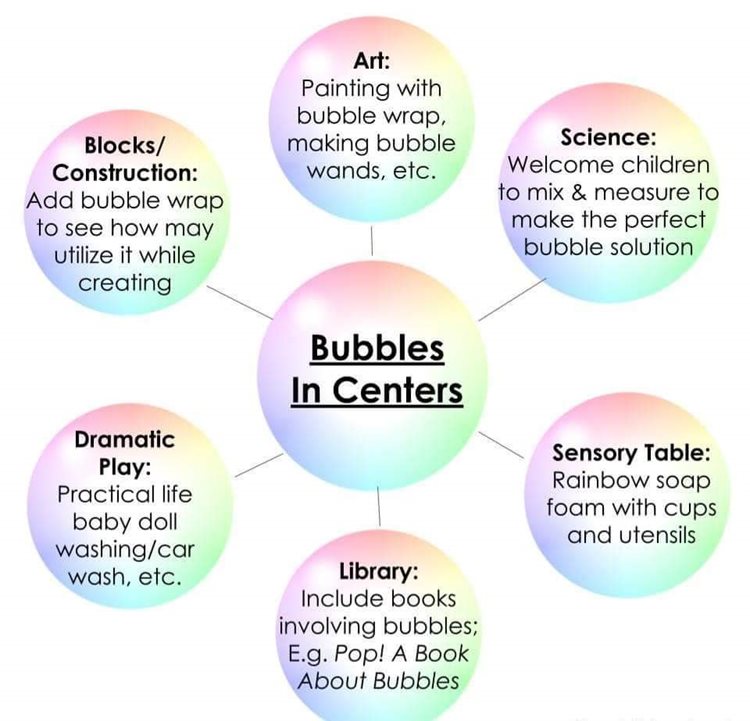
Here are some images and inspiration of how you can incorporate bubbles into different centres in your classroom. However, this concept of course isn't just limited to bubbles. No matter what your study is, try to find ways to connect and represent it around the classroom. The Reggio Emilia philosophy believes in the 100 Languages, meaning learning happens through various mediums and unique approaches to learning. By having the subject of interest present in different ways and in different centers, your study is more deeply reaching all of your uniquely wonderful, curious, and creative learners.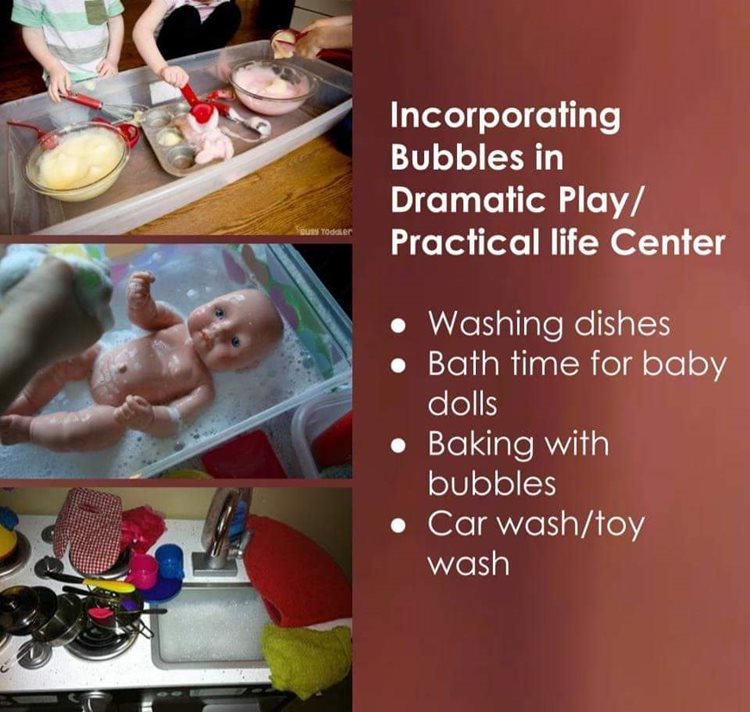
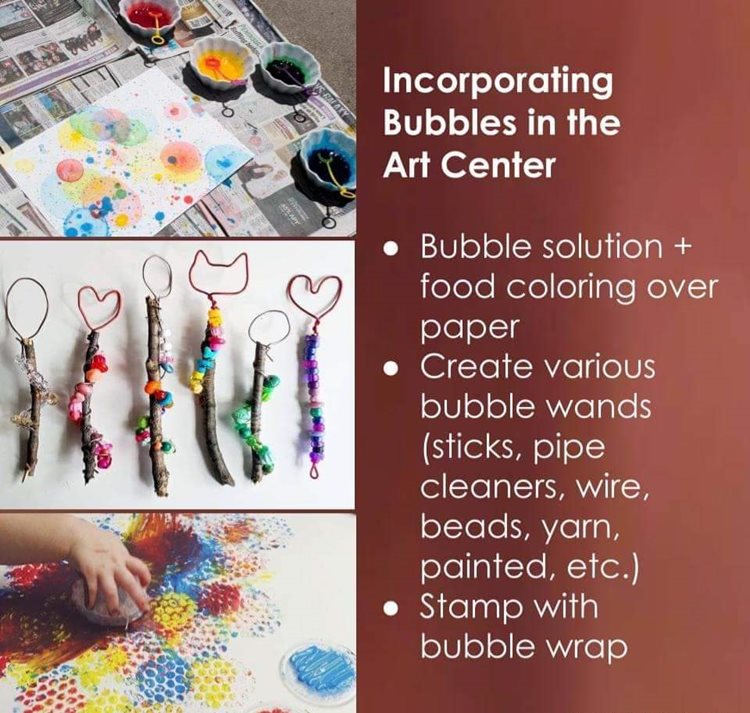


Further reading/resources:
You can purchase Stephanie’s book Bubble Babies here
Follow Stephanie on Facebook for more great insights and ideas: https://www.facebook.com/cuddlebugbooks123/
Read Stephanie’s thoughts on the benefits of process art over product art in her Amplify article from last year The School Bus Project
Read ACECQA’s National Education Leader, Rhonda Livingstone’s article on Emergent Curriculum in the We Hear You blog: Emergent curriculum doesn't mean you don't need to plan
Stephanie has also published a book called If Bedtime Went Your Way, a fun night time book aimed at preschoolers. You can purchase it here.
Further learning with CELA
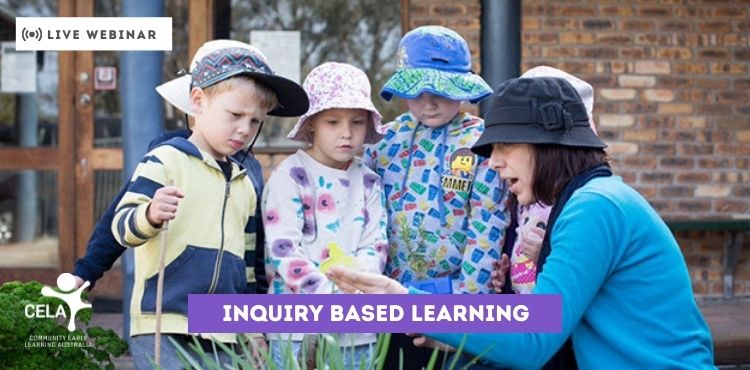
Find out more